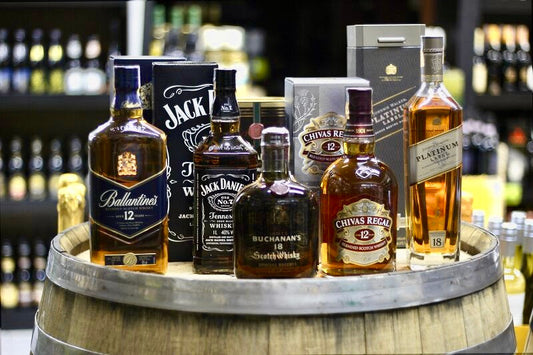
How to develop your whisky palette
How do you develop a versatile palette for the many flavours of whisky? The simple answer is to try many different drams and see which ones you like. However, there is also a more scientific way to approach this matter. Sometimes the jargon surrounding whisky flavours can get a bit overwhelming. It can be difficult to distinguish one term from another.
If you’re looking to enhance your palette, and want to finally come to terms with what separates something “herbal” from something “leafy,” then look no further.
We've created a simple guide to understanding your unique whisky palette, as well as the most important tips for wrangling your own personal whisky tastes. Now you can put a word to the flavours you like the most and easily select similar drams on the fly.
Everyone’s tastes are different
We all have that favourite food that no one else in our family can stomach. What makes one person drool might make another gag. It is no different with drinks, even those of the alcoholic variety. Everyone has a slightly different propensity for taste. So you won’t be able to rely on others too much to pick out your whiskies for you. You’ll need to develop and cultivate your own whisky palette. Doing so involves a lot of work (although in this case, the “work” is sampling different bourbon and rye) and an understanding of how different flavours relate to one another.
Rich or light?
While you’re out there discovering your whisky preferences, you’ll save a lot of time and frustration if you have a clear understanding of what different “whisky words” mean.
Here’s a brief rundown of the four main whisky descriptors.
First comes rich and light, which are the easiest two to get a handle on. A rich whisky is one that invokes a deep flavour from the wood a whisky is aged in. Rich whiskies will taste spiced or nutty and might even have a hint of vanilla or something similar. Light whiskies, on the other hand, are quite the opposite. Light whiskies are more likely to invoke the taste of greens, fruits, and other fresh flavours.
Smoky or delicate?
The main difference between smoky and delicate is the amount of peat they contain. The more peat, the smokier the flavour. The smoky qualities of some whisky usually aren’t hard to identify, but as you move away from smoky and into the delicate range, things start to get more complicated.
Delicate whiskies, depending on whether they are rich or light, tend to host more grounded tastes like barley and the ever-vague “herbal” flavour. It can take some time to get comfortable locating your favourite whiskies on the flavour spectrum, but these two dichotomies will give you a basic sense of where certain flavours lie.
Take your time
If you’ve ever witnessed a wine tasting or sat back to enjoy a glass yourself, then you’ve surely noticed how leisurely consuming wine can be. Well, it’s no different from whisky. If you want to get a firm grasp on the subtler flavours that are hiding in that glass of whisky, you need to slow things down a bit.
Remember that taste map you learned about in school? The one where different sections of your tongue were responsible for acknowledging different tastes like bitter and sweet? Well, it’s completely wrong, but that doesn’t mean that different areas of your mouth aren’t more sensitive than others when it comes to certain flavours.
So don’t just pour your whisky down your throat; give it a moment to work its way over each taste bud before you swallow. You’ll find that there are flavours hidden in even your favourite drinks that you may never have noticed before. And don’t forget to breathe deeply while you sample a new whisky.
Get out there and start tasting
Practice makes perfect. You’ll never get the hang of things without getting out there and tasting as much whisky as you can. Try flavours and brands you may not have considered before, and remember to keep track of the details. Are you drinking single malt? Where is it from? What’s its self-described flavour? You don’t need to break out the flowcharts, but keeping track of what you’re tasting - especially in your whisky loot tasting journal - can help you better hone in on which kinds of whisky speak most clearly to you.
So start breaking in your whisky palette! Sign up to our Whisky Loot newsletter or subcribe to receive your monthly Whisky Loot Subscription, and get ready to taste the world's best before it wins the awards - you'll feel like a rockstar!













